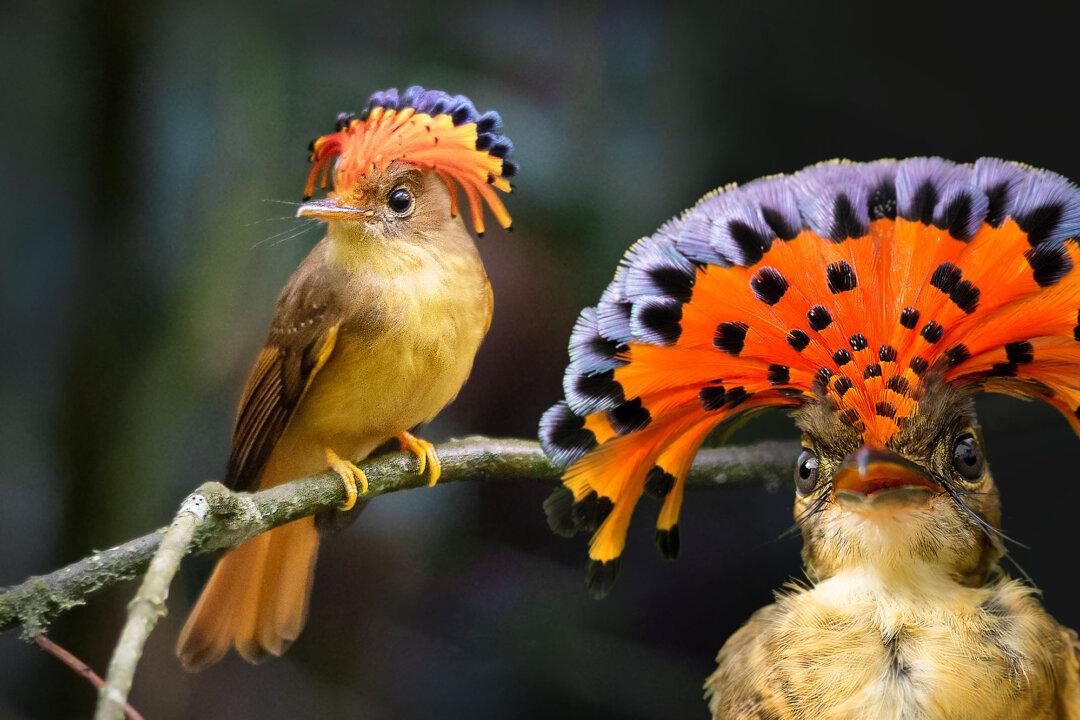An elaborate waving red crest catches the eye, a shot of crimson color hanging from a jungle vine in a tangle of debris, the feathers of a tiny bird. Its waving signal is a display of the royal flycatcher, fully intended to make its presence known. But why?
A second crest appears near the first, this one different in hue, a pale yellow, but also swaying subtly. This is the female royal flycatcher, the first with the red crest being the male, her mate. That hanging “vine” with all the debris is their very unique and low-key jungle nest.






